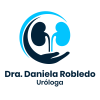Abstract
Aims: To estimate the prevalence of LUTS and overactive bladder (OAB) in the Colombian population.
Methods: A cross-sectional, population-based study was conducted in men and women ≥18 years using directed interviews and self-administered questionnaires in five main cities in Colombia. A sample size of 1054 subjects was estimated (prevalence of LUTS/OAB 15%, CI 95%, statistical power 80%, precision 3%). We used a multi-stage probabilistic sampling technique to randomly select individuals in the community, stratified by socioeconomic status, gender, and age. We used the 2002 ICS and 2010 IUGA/ICS definitions as well as validated questionnaires in Spanish. Descriptive statistics were employed.
Results: A total of 1060 participants were included. Mean age was 42 (range 18-89) years. The prevalence of at least one LUTS was 84%, while overactive bladder was reported by 31.8% participants. Among individuals with at least one LUTS, 13.2% would feel “mostly unsatisfied,” “unhappy,” or “terrible” to spend the rest of their lives with their current urinary condition. Nocturia was the most prevalent LUTS (55.3%), followed by urgency (46.4%) and frequency (45.8%). Urge, stress, and mixed urinary incontinence were reported by 15.3%, 8.6%, and 7% of participants, respectively.
Conclusions: LUTS are highly prevalent in the Colombian population and severely affect quality of life. This is the first study conducted in Colombia and Latin America focused on evaluating LUTS in men and women of all age groups of interest using a multi-stage probabilistic sampling technique. These results may have a significant influence on health decision-making and assessment of future therapies.
Keywords: lower urinary tract symptoms; mixed urinary incontinence; overactive bladder; prevalence; quality of life; urinary incontinence.
© 2018 Wiley Periodicals, Inc.
Similar articles
-
Understanding the elements of overactive bladder: questions raised by the EPIC study.BJU Int. 2008 Jun;101(11):1381-7. doi: 10.1111/j.1464-410X.2008.07573.x. Epub 2008 Mar 10.PMID: 18336602
-
Epidemiology and impact of urinary incontinence, overactive bladder, and other lower urinary tract symptoms: results of the EPIC survey in Russia, Czech Republic, and Turkey.Curr Med Res Opin. 2014 Oct;30(10):2119-30. doi: 10.1185/03007995.2014.934794. Epub 2014 Jun 30.PMID: 24932562
-
Prevalence and impact of lower urinary tract symptoms: Results of the epic survey in Egypt.Neurourol Urodyn. 2019 Feb;38(2):637-643. doi: 10.1002/nau.23875. Epub 2018 Dec 21.PMID: 30575129
-
[The new era in the pharmacological treatment of overactive bladder (OAB): mirabegron–a new selective beta3agonist].Ginekol Pol. 2014 Mar;85(3):214-9. doi: 10.17772/gp/1716.PMID: 24783434 Review. Polish.
-
Overactive bladder in Taiwanese women: re-analysis of epidemiological database of community from 1999 to 2001.Neurourol Urodyn. 2012 Jan;31(1):56-9. doi: 10.1002/nau.21190. Epub 2011 Aug 8.PMID: 21826728 Review.
Cited by
-
Oxidative Stress: A Putative Link Between Lower Urinary Tract Symptoms and Aging and Major Chronic Diseases.Front Med (Lausanne). 2022 Mar 10;9:812967. doi: 10.3389/fmed.2022.812967. eCollection 2022.PMID: 35360727 Free PMC article. Review.








